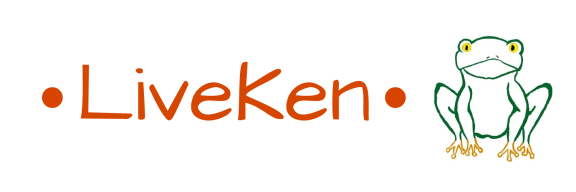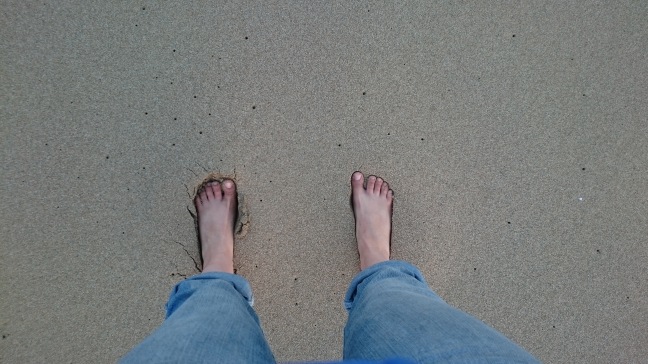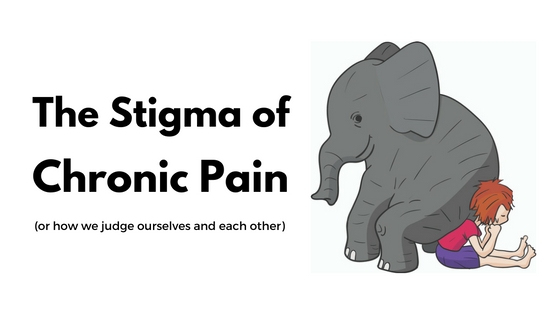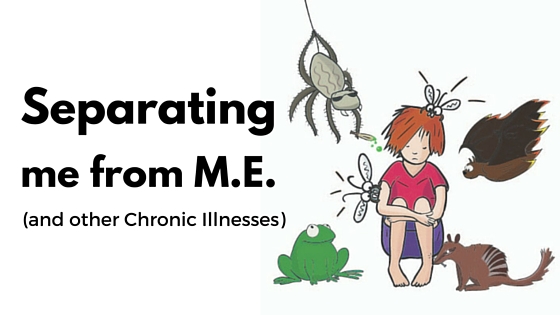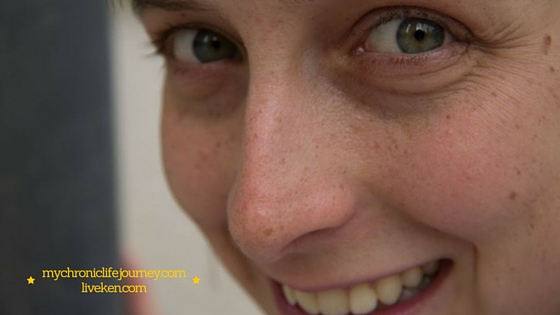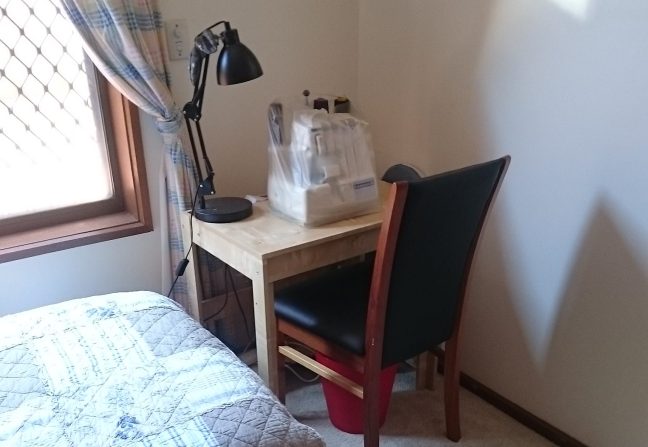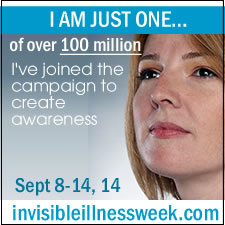This morning I was reading a post from my friend Julie Ryan over at Counting My Spoons where she shared a bit about the rough times she’s going through at the moment and how she’s trying to cope with them.
A lot of what she’s talked about in that post, slowing down and focusing on perspective and a positive attitude, are things that I’ve found have worked for me when learning to live a more sustainable and meaningful life with all the symptoms of a chronic and invisible illness.
I’ve found that, as I’ve learnt to cope better with the constant fatigue and pain that accompany me on a daily basis (hello Foggy Frog and all your friends), my illness seems to become even more invisible.
When the pain first struck it was obvious to everyone around me that something was wrong. I wasn’t able to function at all, I was scared because I didn’t know what was going on, and my body language made it clear I was in pain.
These days it takes a lot of pain and very high fatigue levels for me to look sick. Having accepted what I have to live with on a daily basis, I’ve learnt to ‘ignore’ the pain and the fatigue by focusing on what I can do and simply not thinking about it too much.
These days when I’m out I’m often greeted with ‘you look well!’, ‘it’s good to see you looking so healthy’, or other statements to that effect from people who know me. Inside I might still be feeling like I’m dying but on the outside I look perfectly fine.
This facade does crack occasionally when I overdo it, and those who have seen the sudden change often remark that I looked well one second and the next I looked like I had no energy at all.
What does all this have to do with working?
In most work places you have at least some face to face interaction with other people. People also expect you to look healthy while you’re at work. If you go to work looking like death warmed up you’re likely to be sent home!
I’ve found that being able to slow down and focus on the positive aspects of my life I’m better able to cope with change and with the pressures working puts on me.
Many with chronic illnesses have to work. These people have no choice but to do something in order to have enough money to provide themselves, and sometimes their family, with basic requirements such as food, shelter and clothing.
Others are supported by their family or were lucky enough to have already saved enough money to retire and focus on their health. However, these people still need to feel like their contributing and are ‘worthwhile’.
Personally, I’m lucky enough to be supported by my husband. I work because I want to be doing the work not because I need to in order to survive. I ‘need to’ work in order to maintain my own sense of self-worth and to feel like I’m making a contribution to society.
Because of my own personal situation, I can choose the type of work I take on. At this point in time, half the work I’m doing is voluntary (unpaid work).
The benefit of starting with voluntary or very casual work is the flexibility. Although I still feel guilty occasionally for not doing what I wanted to get done I can just step back and say sorry I need a break if things get too difficult for me. Thankfully I’ve only had to do that a few times so far and I believe that’s because I am taking steps to allow my health to come first.
Building up gradually. I didn’t jump in head first into working after I reached the point I felt I was capable of it. Instead I started with as little as half an hour to an hour a week and slowly built up from there.
I have had set backs along the way but overall I’ve been slowly improving my health and increasing my activity levels. Set backs are, I believe, inevitable when you live with a chronic illness.
Understanding the fluctuations in my health. As I said, I believe set backs are inevitable with chronic illness. My health often fluctuates. Sometimes I can predict it and sometimes I can’t, the important thing is to listen to my body and stop when I need to. The changes in weather through the seasons causes my pain and fatigue levels to fluctuate. Knowing this, I can make sure I don’t schedule too much in the first few weeks of winter and summer (the 2 seasons I’m affected the most). For me, understanding this has been an important part of pacing my activities.
Scheduling rest. Especially early on in my illness, my main tool for pacing was to have set rest periods and starting with very small amounts of activity broken up with larger periods resting. Today I don’t ‘rest’ in the same way I did when I was first ill. Back then I actually slept during the day a lot. These days, unless I’m having a crash and literally can’t keep my eyes open, I try not to sleep during the day at all. My rests are now periods of meditation, listening to audio books or lying in front of the tv (tv used to count as activity when I was really struggling).
Setting goals and keeping a To-Do list. Living with Foggy Frog as a constant companion, I often struggle to remember things. This can be very frustrating so I now keep an ongoing To-Do list that I can check regularly and mark off what I achieve. I also break down any big goals (such as my work projects) into smaller steps so that I only need to focus on one thing at a time.
I aim to be realistic about the timeframes I give myself for projects and To-Do list items. For example, most days I’ll only set myself 2-3 small items to achieve. If I do more I add that as I go but as long as I can mark something off my list each day, I’m generally happy.
This week my focus is on the Foggy Frog book. Yesterday I sent out the survey to allow backers to vote on the cover design and today I’m writing my blog posts. Over the last few days I’ve sent some emails to prominent people asking if they’d like to preview the book and provide comments. The rest of the week will likely be spent following up on publishing quotes and the emails, and beginning to plan the book launch.
How do you slow down and focus on perspective to minimise crashes and maximise your success at work?
